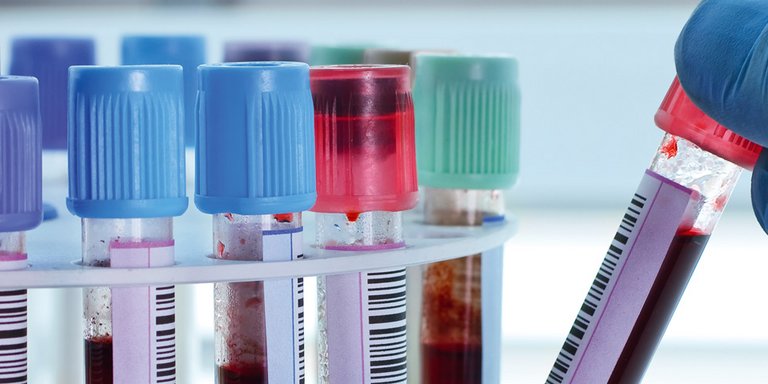
Automated recording of laboratory orders with ScanTools
Modern requirements for an order recording system for medical laboratories and hospitals went beyond scanning and evaluating paper-based clinic and OMR laboratory record documents a long time ago. In the context of future-proof digitisation, there is an indispensable need to cover all the disciplines in the pre-analysis area. ScanTools software carries out the central recording, evaluation and monitoring of incoming laboratory samples together with paper-based and electronic laboratory orders (OrderEntry) in a single solution.
The modular structure of ScanTools software allows it to be optimally configured for your area of use. Thus you use only the software modules you need, while having the option at any time to expand the system with regard to its functionality and performance to correspond to your needs.
Your contact partner
Olaf Hennings
Product consultancy
+49 40 737360 79
Collecting and scanning all paper-based orders
Powerful collection (scanning) of all paper-based orders via the SCAN module. OMR laboratory cards and machine-readable laboratory orders are recognised and processed as standard.
All individual laboratory order forms, e.g. IgEL (Individual Health Services), LOEM (Laboratory Order Entry Modul) and private account notes, together with a wide variety of hospital forms as well as classical laboratory cards (document-reading technology), can also be stored. Digitising, form identification and barcode recognition take place in the SCAN module.
Data evaluation and interpretation
In the subsequent interpretation stage, powerfully-performing algorithms are used to recognise the contents of laboratory orders. In this step, the INTERPRETER module recognises typescript/machine printing, handwriting, markings and label contents, e.g. on hospital forms.
All the recognised raw data is compared internally against data base contents, first name and name tables, postcodes and towns/cities, as well as special data fields from the LIS (Laboratory Information Systems), to yield the best possible recognition results.
Easy communication via the DataExchange Suite
The validated job data set is then provided to the LIS together with the digital image via the Windows services of the DataExchange Suite. On request, data can be provided as laboratory data transfer (LDT 2.0, LDT 3.0), XML, Health Level 7 (HL7) or in CSV format. In addition, LIS master data for ScanTools can be updated and multiple maintenance tasks can be initiated and configured.
Ergonomic display and correction of the recognised data in VERIFY
The interpreted sender, patient and order data, together with the digital order form, are displayed in the VERIFY correction module and are offered for correction. Validation of the recognised data takes place via existing master data together with the digital image. Plausibility checks detect incorrect data, and also compare it with the data bank when necessary. Gathering/recording additional orders (laboratory methods) is also possible, and so is the import of master data and laboratory methods.
Machine-readable request notes with the document generator
You can use the DOCUMENTGENERATOR to quickly and easily create individual machine-readable request notes, including barcodes, text entry and marking fields for your submitters. You can print the created print copies yourself, or they can be sent to a printing works as print copy.
Centralised recording of sample and order data in LAB-OrderManagement
The ScanTools extension LAB-ORDERMANAGEMENT enables the structured order recording of paper-based order forms, electronic orders from OrderEntry systems, and incoming laboratory samples with material information. The module minimises the error rate, thus speeding up the efficiency of the laboratory organisation.
Areas of application of ScanTools
ScanTools without correction
This scanner solution is used in smaller medical laboratories and submitter practices, and also as a substitute for card readers in hospitals.
- Digitising all incoming paper-based laboratory orders via high-performance scanner recording
- Recognition of all 1-D and 2-D barcodes
- Interpretation and evaluation of capital letter handwriting, typewriting/machine printing and markings
- Transfer of recognised data to downstream laboratory information systems for correction
ScanTools with correction
This scanner solution is used by medium to large medical laboratories, and can be configured to suit all requirements.
- Recording all incoming paper-based laboratory orders via high-performance scanner recording
- Integration of electronic laboratory orders from various different OrderEntry systems
- Recognition of all 1-D and 2-D barcodes
- Interpretation and evaluation of capital letter handwriting, typewriting/machine printing and markings
- Ergonomic, plausibility-assisted correction of all recognised data directly on the digital order form
- Multi-stage data correction to start the analysis promptly, based on patients' core data
- Handover of the complete data to downstream laboratory information systems
ScanTools OrderManagement
This scanner solution is used in medium to large medical laboratories, and integrates the recording of sample material.
- Recording all incoming paper-based laboratory orders via high-performance scanner recording
- Integration of electronic laboratory orders from various different OrderEntry systems
- Recording sample materials via loose material sorters and manual collection points
- Intelligent order control based on all order and materials data to optimise laboratory workflow
- Recognition of all 1-D and 2-D barcodes
- Interpretation and evaluation of capital letter handwriting, typewriting/machine printing and markings
- Ergonomic, plausibility-assisted correction of all recognised data directly on the digital order form
- Multi-stage data correction to start the analysis promptly, based on patients' core data
- Display of material data in the correction process to select alternative materials, and/or fast sender information when data is missing
- Handover of the complete data to downstream laboratory information systems
Document scanners
We offer a selection of high-quality, certified Canon document scanners for our ScanTools software.
Our partners
